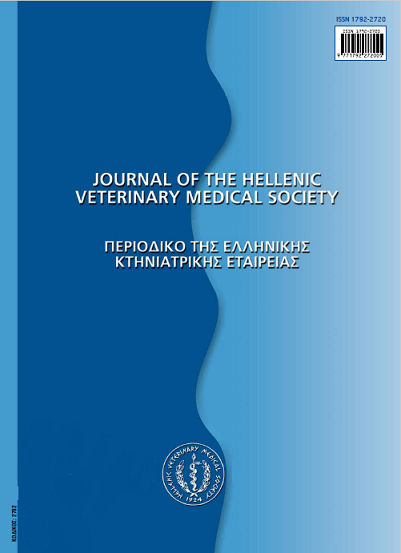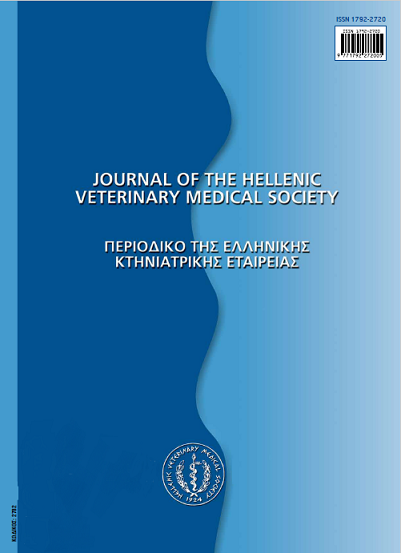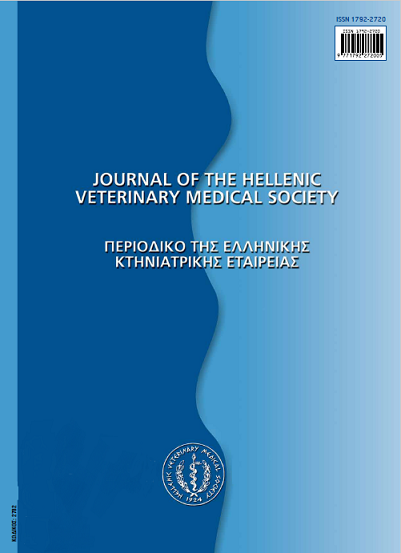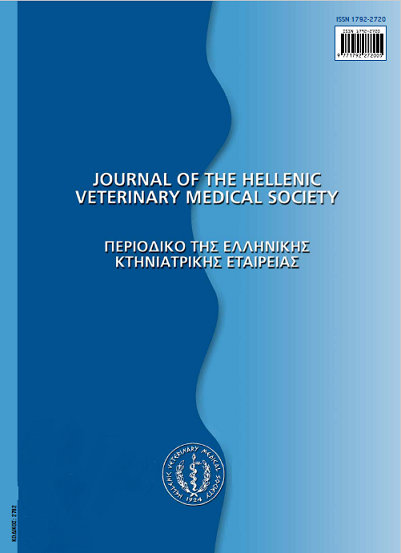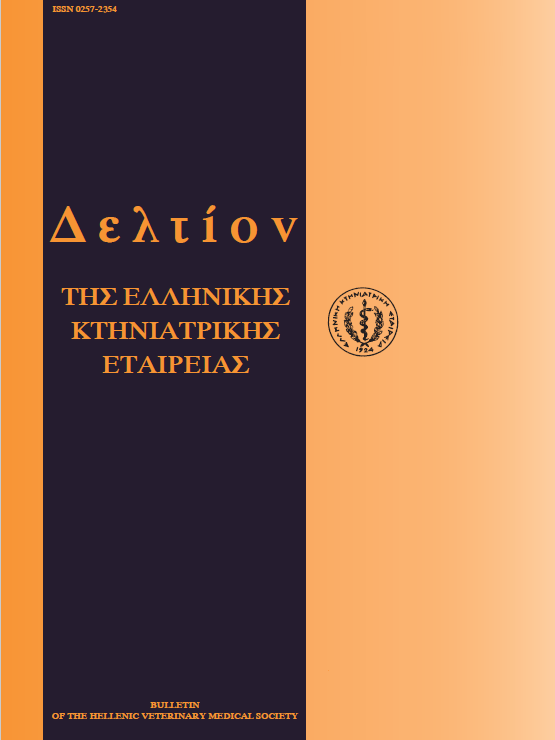Παρουσία των Listeria spp. σε ψάρια του γλυκού νερού (Oncorhynchus mykìss και Carassius gibelio) και στο περιβάλλον ιχθυοπωλείων της Βόρειας Ελλάδας
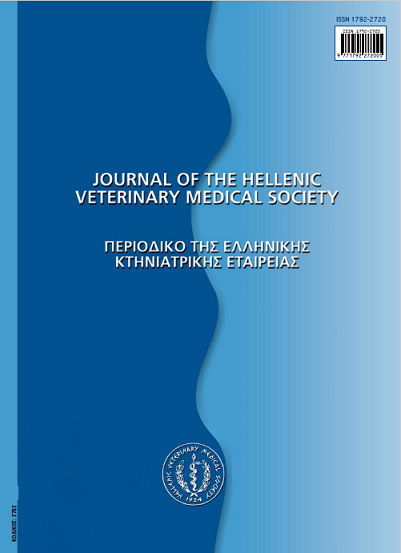
Περίληψη
Στην παρούσα μελέτη, 405 συνολικά δείγματα από ψάρια του γλυκού νερού, το προσωπικό και το περιβάλλον ιχθυοπωλείων τριών πόλεων της Β. Ελλάδας εξετάστηκαν για την παρουσία των Listeria spp. Τα δείγματα αυτά ελήφθησαν136 από την επιδερμίδα και 136 από τη σάρκα 71 πεστρόφων (Oncorhynchus mykiss) και 65 κυπρίνων (Carassius gibelio), 20 από τα χέρια του προσωπικού, 27 από τα μαχαίρια, 22 από τις επιφάνειες εργασίας, 29 από ξύλινες κάσες, 15 από πλαστικέςκάσες, 18 από τα δάπεδα και 2 από καπάκια αποχετεύσεων. Listeria spp. απομονώθηκαν σε ποσοστό 10,62% των δειγμάτων,εκ των οποίων 0,99% ήταν L. monocytogenes, 6,69% L. seeligeri και 4,943% L. innocua, αντιστοίχως. L. Monocytogenes απομονώθηκε σε ποσοστό 3,54% των δειγμάτων του περιβάλλοντος και σε κανένα από τα δείγματα των ψαριών του γλυκού νερού και των χεριών του προσωπικού. Listeria spp. απομονώθηκε σε ποσοστό 1,54% των δειγμάτων από τη σάρκα των κυπρίνων (1,54% L. seeligeri), 18.46% των δειγμάτων από την επιδερμίδα των κυπρίνων (10,77% L. seeligeri και 7,69% L.innocua) και 8,45% των δειγμάτων από την επιδερμίδα των πεστρόφων (1,41% L. seeligeri και 7,04% L. innocua). Το υψηλότερο ποσοστό απομόνωσης των Listeria spp. από τα δείγματα του περιβάλλοντος τονίζουν τη σημασία των συνθηκών υγιεινής ώστε να ελαττωθεί ο κίνδυνος μόλυνσης με L. monocytogenes στο επίπεδο λιανικής πώλησης.
Λεπτομέρειες άρθρου
- Πώς να δημιουργήσετε Αναφορές
-
PAPADOPOULOS (Θ. ΠΑΠΑΔΟΠΟΥΛΟΣ) T., ABRAHIM, A., SERGELIDIS (Δ. ΣΕΡΓΚΕΛΙΔΗΣ) D., KIRKOUDIS (Ι. ΚΥΡΚΟΥΔΗΣ) I., & BITCHAVA (Κ. ΜΠΙΤΧΑΒΑ) K. (2017). Παρουσία των Listeria spp. σε ψάρια του γλυκού νερού (Oncorhynchus mykìss και Carassius gibelio) και στο περιβάλλον ιχθυοπωλείων της Βόρειας Ελλάδας. Περιοδικό της Ελληνικής Κτηνιατρικής Εταιρείας, 61(1), 15–22. https://doi.org/10.12681/jhvms.14868
- Τεύχος
- Τόμ. 61 Αρ. 1 (2010)
- Ενότητα
- Research Articles
Οι συγγραφείς των άρθρων που δημοσιεύονται στο περιοδικό διατηρούν τα δικαιώματα πνευματικής ιδιοκτησίας επί των άρθρων τους, δίνοντας στο περιοδικό το δικαίωμα της πρώτης δημοσίευσης.
Άρθρα που δημοσιεύονται στο περιοδικό διατίθενται με άδεια Creative Commons 4.0 Non Commercial και σύμφωνα με την άδεια μπορούν να χρησιμοποιούνται ελεύθερα, με αναφορά στο/στη συγγραφέα και στην πρώτη δημοσίευση για μη κερδοσκοπικούς σκοπούς.
Οι συγγραφείς μπορούν να καταθέσουν το άρθρο σε ιδρυματικό ή άλλο αποθετήριο ή/και να το δημοσιεύσουν σε άλλη έκδοση, με υποχρεωτική την αναφορά πρώτης δημοσίευσης στο J Hellenic Vet Med Soc
Οι συγγραφείς ενθαρρύνονται να καταθέσουν σε αποθετήριο ή να δημοσιεύσουν την εργασία τους στο διαδίκτυο πριν ή κατά τη διαδικασία υποβολής και αξιολόγησής της.



